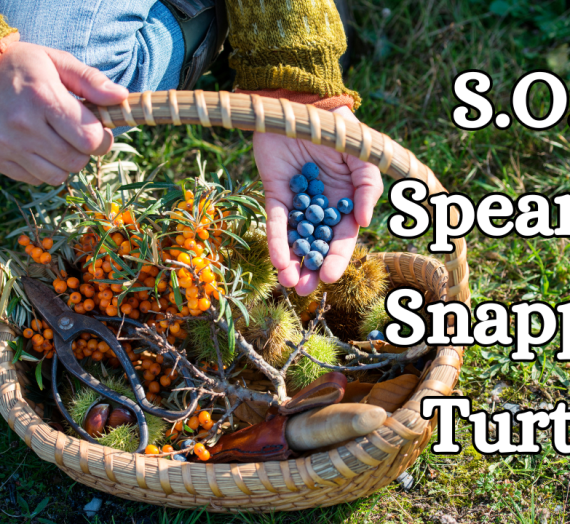What does ash have to do with uncooked food? What was used by Alexander the Great to keep food cool in the summer? What do probiotics have to do with food preservation? What foods should you not can? Find out on this episode.
Welcome to Writing Rural with Alley, the fiction writer’s inspiration station for rural life and lifestyles, from historical to post-apocalyptic, helping you bring your rural stories to life! I’m Alley, and this is episode (#) (title). Stick around to the end to find out all the ways things could possibly go wrong. Now, let’s get into this.
Whether your characters have a garden, foraged for food, or have meat, there are many methods that are used, have been used, and might be used in an apocalypse. Today, we will cover five of them.
1) Wood Ash
Wood ash has been used as a storage method for thousands of years. I don’t have an exact date, but many Native American tribes used this. The Cherokee, in particular, were known for storing meat in hickory ash. Farmers in Africa were known for storing tomatoes upside down in ash. Other items that I have heard of being stored in ash are vegetables, eggs, cheese, and fish.
Allow me to give you an idea of what was done, and you can check out the links on my website for more details. First, all ash was sifted to remove the larger pieces. Next, they found a stone pot, preferably a good-sized one. A layer of ash that is just enough to cover the bottom is then added. If tomatoes were the food being preserved, a layer of tomatoes was then placed upside down, making sure they did not touch each other. Ash was then placed in between and covered the tomatoes. If there was enough room, then more tomatoes would be placed upside down on top of the new layer of ash. This was repeated until no more layers could be added.
It is my understanding that the skins shriveled a bit, but the insides remained juicy. This is said to keep them good for two to three months. Once it was time to eat the tomatoes, they could be taken out one at a time, and the ash removed from the tomato. Since the bigger particles were already taken out, it was like wiping dust off the tomato.
2) Curing (specifically onions and garlic)
Curing, in this case (because there are different types of curing), means drying the outer layer in a way that the plant preserves itself. This is done by placing the onions or garlic out in a well-ventilated area that is not in direct sunlight and will not let moisture come in contact with them as they dry. Native Americans and many pioneers would lay them out in the shade of trees for a few days to dry. They were rotated often. If it rained, they could be placed inside to dry on the ground.
In modern times, most people use wood to build drying racks. These are two boards placed an inch or two apart in long rows. There are usually several rows added together to dry many at one time. When the roots are crunchy, and the stem has turned brown, it is time to place them in a cool place with low humidity. However, many people braided the leaves together and hung them up in batches to store them. This was a very common practice and is still done to this day.
3) Icehouses and Spring Houses
I’m placing these two in the same category because they are both above-ground houses for storing food. Although they function differently, they essentially serve the same purpose. They keep food at a cool temperature in the summertime.
A spring house is a building built over the top of a cold natural spring or sometimes a stream that is fed by a cool natural spring or comes from the mountains. Springs have cool temperatures and would keep the house cool too. Many times, a deeper area was dug into one section of the icehouse to accommodate things, such as milk jugs, pots, or whatever they were storing in it. They also storied fruits, veggies, meats, butter, cheese and more.
As far as I can tell, spring houses date back to early colonial times in North America. They are made of wood or stone, but before modern lumber, many were built with logs. Homes that used the spring water for drinking and livestock were careful to build their homes close by, but have a place downhill to build. This was to keep the water pure, AKA not having livestock poo, laundry water, or even outhouse droppings leaching into the water.
Ice houses are buildings built to hold winter ice to keep things cool in the summer. The earliest known documentation of this is from northern Mesopotamia in 1780 BC. There are records of them in 7th century China, and even Alexander the Great used them. These were used by many people until about the 1950s when refrigeration became widely used in their place.
However, many Amish and off-the-grid people use them today. They can be made of wood and insulated heavily. Sometimes the backs of refrigeration trucks are repurposed for this. The Amish living in more northern places will wait until winter when they will saw the ice from a stream, pond or lake with either a hand saw or, if their order allows it, with a gas circular saw. Afterward, they haul it back to their buggies or wagons to be loaded and taken to the ice house. Most of the time, this is done in the early predawn hours so they do not risk the ice melting on the journey to the icehouse. The people further south will have it trucked in now a days. In history, ice was primarily transported by trains.
4) Fermenting
Fermenting is the process of using microorganisms to stabilize the food. In simple terms, it makes the food storable without it going bad or your character poisoning themselves. This process makes foods easier to digest and produces probiotics. Probiotics are the good gut bacteria that your body needs to break down food inside your body.
The most common types of fermented foods are yogurt, sauerkraut, and sourdough bread. Almost any acholic beverage is fermented. However, many other things can also be fermented. This includes eggs, tomatoes, green beans, carrots, limes, asparagus, garlic, onions, wheat, chicory, Jerusalem artichokes, barley, and more.
There are a few simple steps to this. Clean the food and prepare it for the jar your character will be using. This could be shredding it or chopping it into cubes. The idea is to have them as uniform in appearance as possible. Next, place them in a clean glass or whatever they are being fermented in. Pack them tightly to help keep them all under the brine that will be added shortly.
Speaking of, that is the next step. Pour a high-salt-content brine over the food. The recipe for basic brine that I found is 3 tablespoons of high-quality salt (not table salt) for every quart of water. Once that is done, use a fermentation weight to weigh the food down so it will be fully covered by the brine. Do not put a lid on it at this point. Then let those little microorganisms do their job. Your character will see bubbling and air bubbles moving toward the top of the jar. There might even be some liquid spilled. When they see no more air bubbles and nothing moving to the top, then it is done. Top it off with clean water and put a lid on it, then store it in a cool, dry place. That’s all there is to it, at least for food.
5) Canning
Last on the list this week is canning. No, not like the ones you buy in the store, at least not here. Canning was invented in 1809 in France and is defined as placing food in a glass jar and heating it to the appropriate temperature to kill microorganisms and enzymes that could hurt your character or cause the food to go bad.
There are two ways to can food: with a water bath or with a pressure cooker. Both will involve boiling water and bringing the foods to the correct temperature. There are as many ways to properly can food as there are types of food. I might go into details in another episode, but not this one. The list of foods you can is extensive and includes fruits, vegetables, meat, and even fully cooked meals.
Actually, the list of things not safe to can is the shorter one. It is not safe to can milk, butter, cheese, or any type of dairy; eggs; oil; starches, such as flour: pie filings: gelatin: or anything that thickens soups, such as corn starch. Bread should not be canned. It can be stored in a can, but not in the same canning method with heat.
Something to remember with this is that if it is done wrong, you risk botulism and other types of food poisoning. Historically, botulism killed half of the people who had it. With modern medicine, only 5 out of every 100 people die from it. So, every step must be taken carefully and done right. All jars must be sealed correctly, and if they are not, they will need to be eaten right away or thrown out. That all sounds scary, but it really is not as long as the person takes it seriously.
A last important note: all jars and lids need to be clean and sterilized before using them. Yes, the heat kills a lot of germs, but there is no reason to add extra.
Fun fact: The most popular fermented food globally is yogurt.
What could possibly go wrong?
Likely to go wrong: Your character’s child is playing and accidentally locks themselves in the ice house. Your character might not know where they are and spends hours looking for them before they are found.
Likely to go wrong: Your character accidentally burns themselves when they remove a canning jar from the water bath, and they drop it. When it hits the ground, it breaks, sending boiling hot food in all directions and burning your character a second time.
Possible to go wrong: Your character is trying to dry onions on the ground. In the night, a storm comes up and rains on them, ruining all of the onions that were left to dry on the ground.
Possible to go wrong: Your character places a cold jar in boiling water without first warming it, and the jar shatters, ruining the food they were trying to preserve.
Unlikely to go wrong: Your character places their outhouse uphill from their spring house. As the droppings leach into the soil, it flows down to the spring, contaminating the water.
Unlikely to go wrong: Your character tries to preserve a sticky food, such as apples cut in half to save room, and the ash sticks to or even seeps into the food.
Improbable but still technically in the realm of possibilities: Your character doesn’t know to not place a lid on fermenting food until it is fully fermented. One day, while they are sitting next to it, the pressure becomes so great that it erupts like a tiny fermented volcano.
Improbable but still technically in the realm of possibilities: Your character ferments some pickles and doesn’t realize they improperly sealed the lid. When they eat the pickles, they unknowingly infect themselves with the food poisoning botulism. This could be deadly.
Helpful links to learn more:
Wood Ash:
https://www.askaprepper.com/how-to-preserve-your-food-with-wood-ash/
https://practicalselfreliance.com/preserving-cheese-wood-ash/
Curing (onions):
https://youtube.com/shorts/qXLkPgVyqFU?si=hExK_r0zaK6HSXYV
https://ag.umass.edu/vegetable/fact-sheets/garlic-harvest-curing-storage
Spring house/ ice house:
https://mercersburghistory.org/blog/34/
http://www.historyofrefrigeration.com/refrigeration-history/history-of-ice-houses/
https://tracyfredrychowski.com/amish-ice-house/
Fermenting:
https://homesteadingfamily.com/fermentation-for-long-term-preservation/
https://www.heartfoundation.org.nz/about-us/news/blogs/fermented-foods-the-latest-trend
Canning:



